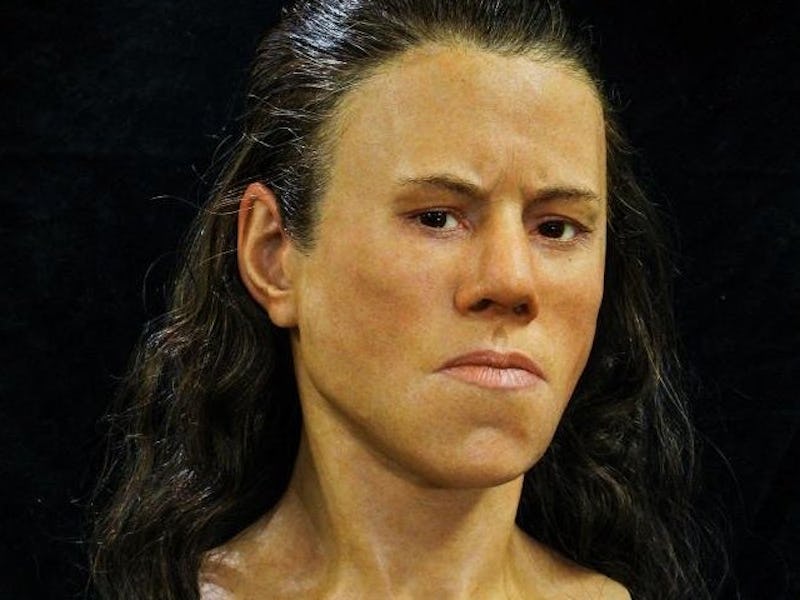Reconstructed Face of 9,000-Year-Old Teen Reveals How Our Ancestors Looked
Our looks have 'smoothed out' over time.

There’s no such thing as complete evidence of our ancient human ancestors. They didn’t leave behind records for us to interpret, and as far as we can tell, they didn’t back up their files on Zip drives. Everything we know about our ancient human ancestors has been pieced together from traces of archaeological evidence, and despite how spotty the record is, scientists have achieved remarkable feats of historical recreation.
Their latest archaeological story-telling success comes from researchers at the University of Athens, who worked with Swedish sculptor and archaeologist Oscar D. Nilsson to reconstruct, using an ancient skull and complex scanning techniques, the face of a teenager who lived 9,000 years ago in modern-day Greece’s Thessaly region. It was unveiled on January 19 and is now on display at Greece’s Acropolis Museum.
To begin the reconstruction, researchers performed a CT scan on her skull, which was found in Theopetra Cave in 1993, an archaeological site that had been occupied for over 100,000 years. Using this information, they 3D-printed a copy of the teenager’s skull.
On top of the 3D-printed skull, Nilsson placed pegs to indicate how thick the skin and muscle should be in particular places. Then, he installed glass eyes and built facial muscles using silicone. On top of it all, he finished off her head with artificial skin and hair. He used a combination of anthropological context and creative license to recreate her skin and hair, referring to what scientists know about people from that region.
When the owner of this skull was alive, people in this particular region of Greece were just beginning to shift from hunter-gatherer societies to agricultural ones. Thus, the researchers named her Avgi — Greek for Dawn — in reference to the dawn of civilization.
Researchers say Avgi was between 15 and 19 years old.
The researchers’ best estimate puts the girl’s age at somewhere between 15 and 19 years old. At the Avgi’s unveiling, orthodontist Manolis Papagrigorakis, who led the reconstruction, remarked that her teeth suggest she was 18, “give or take a year,” but that her bones looked more like they belonged to a 15-year-old, reports National Geographic.
In addition to Papagrigorakis, the research team included a neurologist, endocrinologist, orthopedist, radiologist and a pathologist. Together, they concluded that Avgi suffered from anemia, scurvy, and joint problems, according to Phys. They don’t know how she died, though.
Avgi’s features are notable in that she has a prominent brow and jaw, which some observers would refer to as masculine, though the researchers point out that her protruding jaw could have been the result of frequently chewing animal skins to soften them, a common practice among Mesolithic people. Nilsson says these are common features of humans from that time period.
“Having reconstructed a lot of Stone Age women and men, I think some facial features seem to have disappeared or ‘smoothed out’ with time. In general, we look less masculine, both men and women, today,” he told NatGeo.